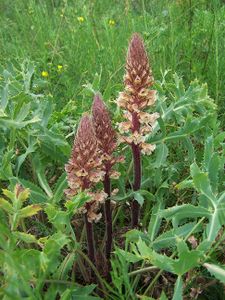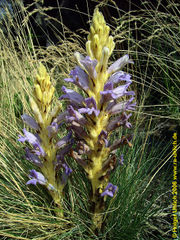Hauptseite
Aus OroWiki
Der Autor ist stets dankbar für relevante Informationen oder Verbesserungsvorschläge zu diesem Projekt. Sie können mich kontaktieren unter here
| Sommerwurzgewächse | ||||||||||||
|---|---|---|---|---|---|---|---|---|---|---|---|---|

Orobanche amethystea, Kalbenstein (GER), phot. H. Uhlich 20.06.2010 | ||||||||||||
| Systematik | ||||||||||||
| ||||||||||||
| Wissenschaftlicher Name | ||||||||||||
| Orobanchaceae | ||||||||||||
| Vent. |

Willkommen zum Projekt OroWiki.